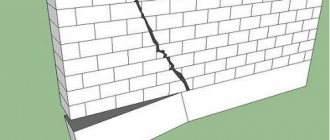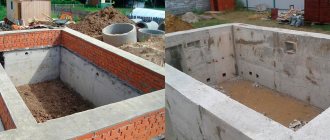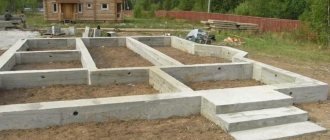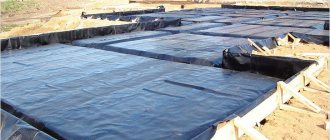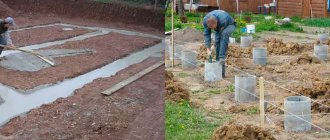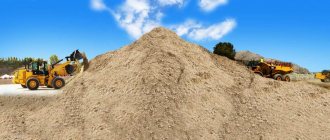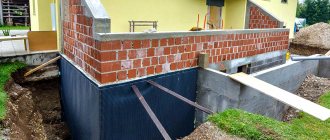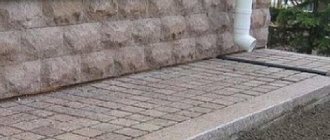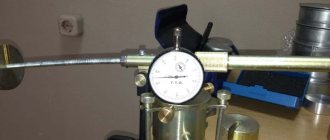May 11, 2020 Stroyexpert Home page » Foundation » Materials and equipment
Choosing cement
One of the most used binders in construction is cement, the predecessor of which was known back in Ancient Rome. The amount of this powder sold by construction sites and manufacturers exceeds tens of thousands of tons per year. Not every home craftsman knows which cement to choose for the foundation and the manufacture of other structures. The types and characteristics of the material, its labeling will be discussed further.
How does the brand of mortar depend on the brand of cement material?
Fillers used for concrete give the solution certain properties and additional qualities.
In the classic version, concrete is composed of crushed stone, cement and sand, when mixing which a certain amount of water is added. The quality of the mixture being prepared depends on the binding component.
Concrete solutions are differentiated by the load forces they can withstand. To determine it, laboratory tests of samples are necessary, according to which the mixture is labeled according to the composition and type of binder. For different types of buildings, certain concrete compositions are used, taking into account the required level of strength.
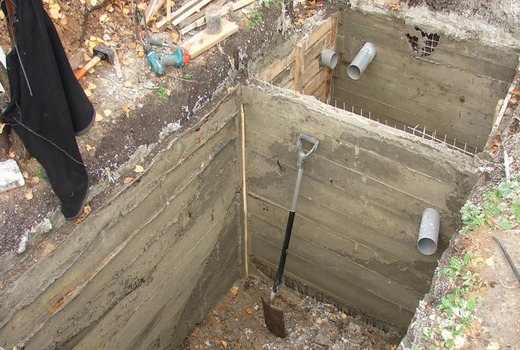
There is no definite answer as to what brand of cement is needed to fill the foundation. The fact is that the quality of the binder is determined by numerous factors.
Most often, builders use M400 or M500 cement. As a rule, cement, sand and crushed stone are taken in a ratio of 1 to 3 to 5. The quality characteristics and brand of cement directly affect the quantity. For example, a higher class is added to the mixture being prepared in a smaller volume.
Legend
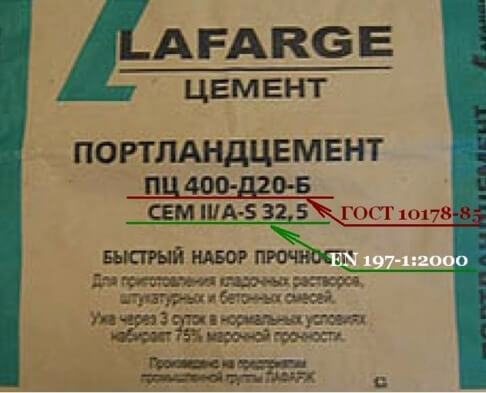
The following cement brand designations are distinguished:
- the type of cement is designated by the first letters, for example, Portland cement - PC;
- cement grade, which is determined by the compressive strength - from M300 to M700;
- number of additives included. When adding is prohibited - DO, up to 5% of the total mass - D5, from 5 to 20% - D20;
- depending on the defining characteristics: for example, fast-hardening - B, hydrophobized - GF.
The properties of concrete deteriorate during long-term storage. As a result of the effect of moisture on cement, its grade decreases. In one month, 10% of strength is lost. Based on this, strength must be taken into account when drawing up the proportions of cement mortar.
Return to contents
How is cement marked?
Not only the operational life of the structure, but also its tensile and bending strength indicators - those types of loads that the concrete strip experiences most of all - depend on the cement used to fill the foundation base. To know what brand of cement is needed for the foundation of a house, it is recommended to understand its differences.
NOT so long ago, a concrete mixture was prepared on the basis of one of the binding components - PC (Portland cement) or ShPC (slag Portland cement). The main difference was the powder composition and strength characteristics. The grades of cement for the foundation complied with current GOST standards.
In addition to the name, the brand of cement material for constructing foundations and other works contains a designation with numbers that indicate the maximum strength under load until complete destruction.
Now let's see what grades of cement there are, how the marking is applied and what its meaning is.
According to the old designation system, several brands were distinguished:
- M 300 - withstands loads of up to three hundred kilograms per square centimeter of surface;
- M 400 – corresponds to a pressure of 400 kg;
- M 500 - withstands impacts of at least five hundred kilograms per unit of area;
- M 600 - carries a load of six hundred kilograms.
The characteristics given here are not able to give unambiguous advice on what brand of cement to use for constructing the foundation of a house, and what to use when building lighter structures. Naturally, for large structures it is necessary to take material with a greater load. But you can prepare a concrete solution with the required characteristics by changing the amount of cement composition of a lower grade, increasing its quantity.
When determining which cement material is best for the foundation of a house, it is recommended to pay attention to the presence of mineral additives in it and their quantity.
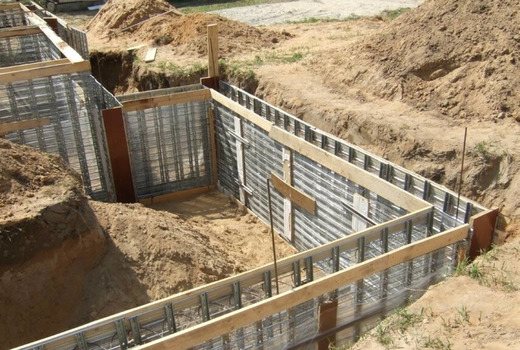
This criterion is present in the labeling of the material, and its presence is indicated by the corresponding letters and numbers D0 or D20. Before making the final choice in cement, it is recommended to clarify how mineral components influence the quality of the binder. For example, D0 does not contain any components, and the solution is of the highest quality. But the brand with the designation D20 contains up to twenty percent of impurities, which reduce not only strength, but also cost. When choosing a cement material, for example, to construct a fence foundation, you can use a powder with a lower strength index, thereby reducing the overall cost of construction work.
When deciding which material is best to use for pouring a strip foundation, you should study the remaining characteristics of the component indicated in the labeling. The most common designations are:
- PL – cement contains plasticizer additives. This type of foundation material is used when the region experiences low temperatures in winter;
- VRC - this abbreviation denotes the moisture resistance of the mixture and the increase in volume during hardening. If you are in doubt which cement is best for a foundation in a swampy area, then you will not find another option;
- B - such material requires less time before final hardening. If you have a choice about what to use for the foundation of a house, when the time frame for work is limited, choose this particular cement material;
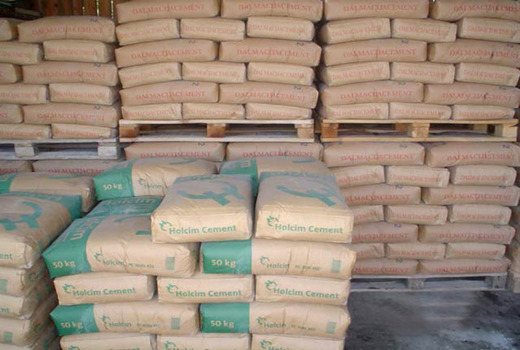
- SS – sulfate-resistant cement. It is rarely used by private developers, because its main purpose is considered to be concreting hydraulic structures. When plugging oil and gas wells, plugging cement is used - a mixture of clinker powder, gypsum and other components;
- N – cement with this marking has undergone additional rationing using clinker. This additive ensures high strength of the material;
- BC – “white cement”. A distinctive feature is that it becomes lighter after hardening. It is rarely used, mainly for finishing work.
A few words about storage and purchase
We have already said more than once that cement is a building material that is very sensitive to storage conditions. In conditions that are far from ideal (and this happens more often than we would like), the brand of cement and, accordingly, its properties deteriorate over time. After a month of storage, it may turn out that the M500 brand is no longer actually such - it has become an M450. Over six months of storage, cement can lose a quarter of its original properties. And relying on a substance that has been stored for a year or more is very presumptuous! If you treat cement as a food product that has an extremely limited shelf life, then you will hardly have to doubt whether the brand of concrete obtained from it corresponds to the calculated values! We recommend buying only factory-made cement, which clearly indicates the manufacturer and marking, packaged in 4-layer (40 kg of cement) or 5-layer (50 kg) bags. First, decide how much cement you need for the foundation, because it is better to buy building materials from one batch, which guarantees the same properties for different batches. Think about your purchase a maximum of 2 weeks before you start preparing concrete.
As a rule, the cost of industrial cement is slightly higher than that of building materials of dubious quality. However, by purchasing factory-made building materials, you are protected from:
- underweight;
- mixing foreign impurities into cement, which not only reduce the grade, but also affect other properties of this building material;
- loss of cement grade as a result of long-term or improper storage
Assessment of the quality of cement raw materials
A low-quality material will not make a good concrete foundation, and you should learn to identify its signs by appearance.
When choosing which cement is best for the foundation of a house, garage or for the foundation of a bathhouse, you should pay attention to a number of indicators:
- date of production - the quality characteristics of cement gradually decrease during storage of the material. If the cement was made six months ago, then it is not recommended to use it for serious objects;
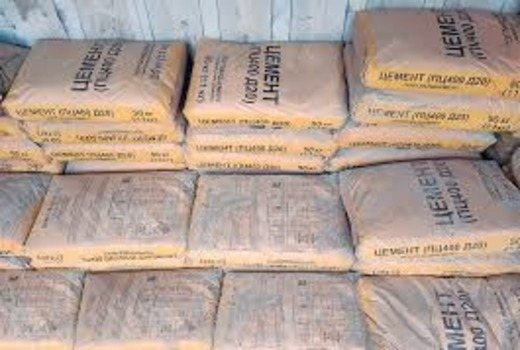
- consistency - ideal powder state - loose, without lumps. This is easy to check - the packaging is touched and turned over;
- packaging material must remain intact and dry. When deciding which cement is better, check the name of the manufacturer and production time. If there is no such information, there is no point in buying the material.
It turns out that it is difficult to choose cement for pouring the foundation. All working conditions of the material, the condition of the soil composition, and the timing of construction should be taken into account.
Types of additives in concrete
In order for the concrete or future foundation to be strong and durable, as well as to have high performance characteristics, it contains certain additives, which can be divided into the following types:
- Plasticizers allow you to mix the solution with less water, due to which the foundation will freeze significantly less during the cold season, will be stronger and more durable, and will not sag over time.
- Antifreeze additives are used in construction when constructing houses in cold regions. They allow you to work normally with cement in severe frost.
- Compactors help increase the strength of concrete and are used for the construction of thin walls.
- Strengthening accelerators are used during short construction periods, when it is necessary for cement to gain its strength as quickly as possible after pouring.
- Set retarders are used in cases where it is necessary to keep cement in a liquid state for a long period of time, for example, during transportation.
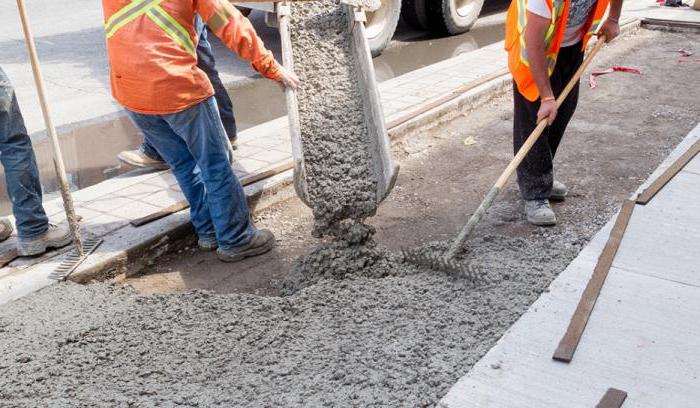
There are also universal supplements that combine all of the properties listed above.
What to use when building a foundation
We have to remember that the soil composition may differ in certain characteristics. For dry soil, it is better to prepare a solution from cement grade 500 D0, and you will get a mixture of grade M 350.
You can use the help of experienced builders who will tell you which brand of cement is best to use in a particular case, in what proportions to mix, and what sand dispersion to choose.
As a rule, M 400 and PC 400 with a D20 indicator are used in private construction for the construction of a one-story house and utility room. For such foundations, the maximum load is not the main indicator, and cement of this brand is considered an ideal solution that saves money.
M 400 and PC 400 D0 are almost similar in properties to D20, but do not contain impurities. And if you are building a foundation that must be used in a humid environment and in severe frosts, and do not know which cement is better - with or without additives, use “clean” material.
M 500 and PC 500 D20 are good cement for foundations for large industrial and administrative facilities, high-rise residential buildings. For construction in frosty and humid regions, it is better to use PC 500 D0.
Explanation of markings
- SS – does not break down in an aggressive salty environment. Suitable for hydraulic structures.
- ShPC – contains more than 20% additives (gypsum no more than 5%, clinker minerals with 6% magnesium, blast furnace slag). It has good heat resistance and resistance to sulfate water.
- VRC - mainly used in wet conditions, as it is waterproof. Its main advantage is rapid hardening.
- PC is the main binder in construction (Portland cement).
- BC – white (for finishing or restoration).
- B (fast-acting) - used to create reinforced concrete structures.
- PL – has increased frost resistance and plasticity.
- GF - combines the qualities of the WRC and PL.
- N - prepared on the basis of clinker containing tricalcium aluminate (C3A) in an amount of no more than 8%.
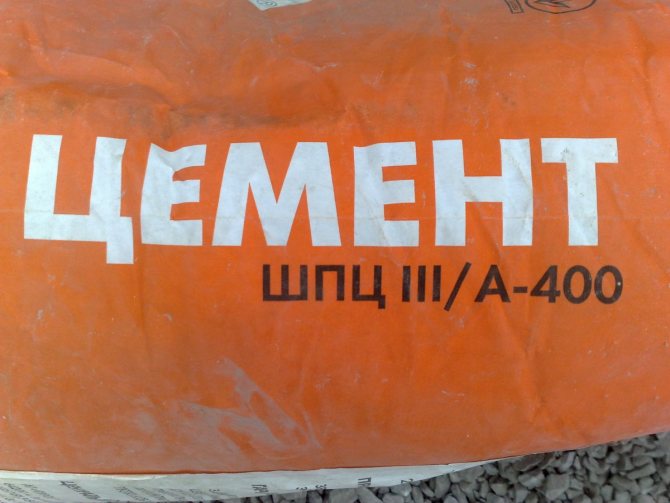
We evaluate the composition of cement raw materials
To check the composition and practical quality of cement, mineral water containing bicarbonate, without gases, is used. Cement powder is mixed with this water until it forms a dough. A flatbread is prepared, thick in the center and thin at the edges. If high-quality material that does not contain additives was used to make cement, the cake hardens in ten to fifteen minutes, and it is quite difficult to destroy it (especially in the center).
At the moment of hardening, the cake heats up and changes color from gray to bluish-green. This effect does not occur with every cement material and depends on the specific manufacturer.
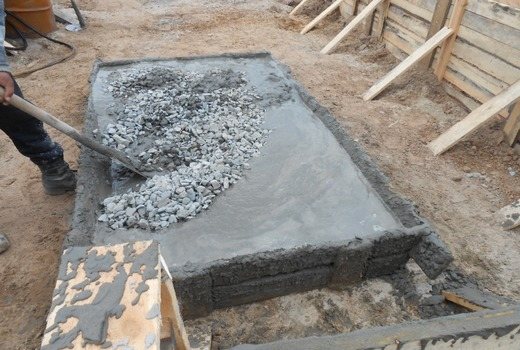
If the cake remains soft for half an hour, the cement does not have good binding qualities; it contains impurities, about which you will not find any information on the packaging material. As follows from the reviews of developers, such material is not suitable for foundations, because it cracks during the hardening process.

